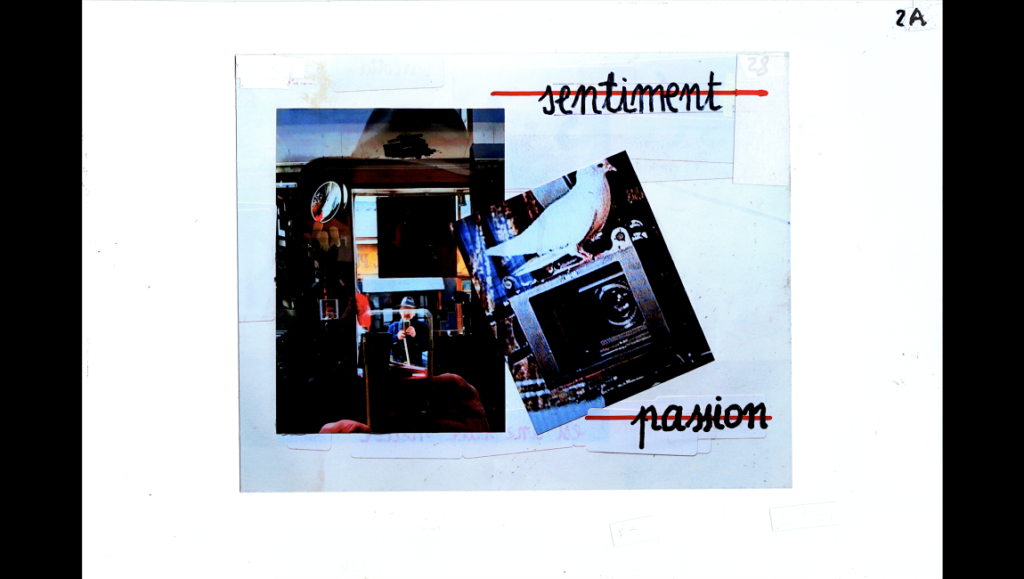We’ve just passed the one-year anniversary of Jean-Luc Godard’s death via assisted suicide. Those closest to him suggested his advanced age and ailing health led to the decision, while others claim he was simply exhausted by life. There’s a thousand eulogies and obituaries out there, a testament to Godard’s towering stature and importance to the art form, although there’s no real way to make sense of his immense body of work in its totality — Godard was too opaque, cryptic, willfully gnomic for such easy summations; the existence of the new Trailer For a Film That Will Never Exist: Phony Wars presents, then, a confounding (if extremely beautiful) object — a fragmented preview of a larger work that will never come to fruition, a suicide note, a communique from beyond the grave.
Common for Godard’s work, the English-language trade press has little to no use for this sort of film, but Craig Keller has provided the great service of translating and publishing Marco Uzal’s writing on the film after its Cannes premiere. Uzal writes, “for Godard… every movie is a construction site, and every film construction site is itself a film.” Uzal cites as precedent Godard’s penchant for releasing essayistic “scenario” films, i.e. Scenario of Sauve qui peut (la vie), Scenario du film Passion, and Small Notes Regarding the Film Je vous salue, Marie; Orson Welles had a similar penchant, and of course as Jonathan Rosenbaum has observed, “Godard was hated as much as Welles by the commodifiers who could find no way of commodifying his art, of predicting and thereby marketing his next moves.”
So the film is essayistic, yes, but maybe more in the way of a scrapbook, or a sketch. Multiple collaged images arrive with handwritten notes, scribbles, underlined passages, and crossed-out words, splotches of ink and paint. One recalls Maurice Serullaz’s quote, “Drawing is the artist’s most direct and spontaneous expression, a species of writing — a study of even the swiftest sketch discloses the mind and nature of its author.” Godard was of course a writer, too, a fine one, and Phony Wars often feels like a prolonged utterance, a run-on sentence that shades in some modes of thought while never settling on one or the other. So how to make sense of this unclassifiable object, equal parts film, video, sound, painting, writing?
The film begins in silence, as still frames flit across the screen. There is text, some more legible than others, and Godard indulges a kind of joke, the subtitles for which translate as “It’s hard to find a black cat in a dark room, especially if it’s not there.” Another image reads “Notre Guerre” (Our War). Eventually, somber chamber music swells on the soundtrack, then a woman’s voice begins speaking. More hand-written notes, like graffitied slogans: “the camera is just an old quantum epidiascope” (an optical projector capable of giving images of both opaque and transparent objects) followed by “the news from Spain was bad.” There are now reproductions of impressionist paintings, xeroxed copies of images, clippings from magazines and newspapers, Polaroids, smears of paint a la Franz Kline’s black line works, blown-out frames with the typography from Histoire(s) du cinema.
Finally, we hear his own voice, raspy and labored, but quite beautiful in its way, still somehow stentorian even as it quavers. Godard begins describing his admiration for Belgian writer Charles Plisnier, and how he had hoped to adapt his novel False Passports into a film titled Carlotta. Godard says he was interested in the way that Plisnier “drew” portraits of certain activists he knew in the 1920s, presumably fellow Trotskyists who would all eventually be expelled from the Soviet Union. Plisnier would eventually abandon Communism for Catholicism while maintaining his allegiance to Marxism, a convoluted sort of melange that would presumably appeal to the political vagabond Godard. The director observes, “he [Plisnier] was more like a painter than a writer, he painted portraits of people’s faces or how they looked.” Godard wonders aloud if he could go back and make a film knowing what he knows now, and if he could make it in the way of Melville’s Le Silence de la mer.
Kent Jones once wrote an essay titled “Can Movies Think?” That’s a hard question to answer, but certainly, Godard’s films are exhibits of one artist’s thinking, volatile and out loud, thinking rendered as a piece of action painting as much as a film. Godard long associated his filmmaking with the 20th Century, finding them intrinsically linked, and often declared the “death of cinema” as the world barreled toward fresh barbarism while refusing to reckon with past atrocities. But as Patrice Rollet has observed, one of the “possible types of cinematic death” belonged to both Serge Daney and Godard, for whom “in its disappearance, cinema appears.” “I wonder sometimes,” Daney writes, “if it were necessary for cinema to disappear to move from a state of limbo to center stage, from fog to light…” Godard liked to say that “cinema taught him how to live,” so perhaps it is fitting that even in death, he is still using cinema to try to make audiences see anew.
DIRECTOR: Jean-Luc Godard; CAST: —; DISTRIBUTOR: Kino Lorber; IN THEATERS: December 15; RUNTIME: 20 min.
Originally published as part of NYFF 2023 — Dispatch 1.


Comments are closed.